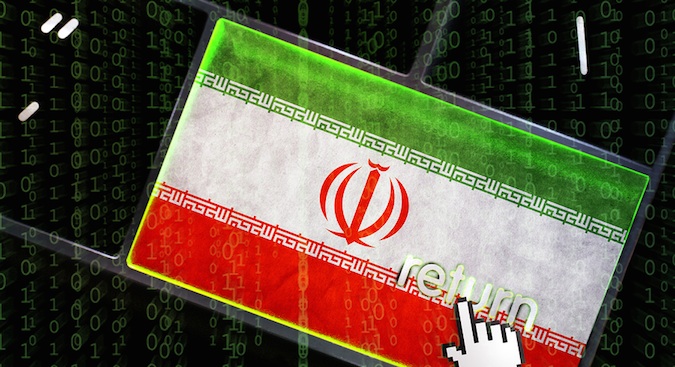
The last few weeks have seen a substantial escalation of tensions between Iran and the US as regional cyberattacks gain pace and sophistication with Iran’s downing of a US drone, possibly leveraging its previously claimed GPS spoofing and GNSS hacking skills (to trick it into Iranian airspace) and a retaliatory US cyberattack knocking out Iranian missile control systems.
While global corporations have been targeted by actors often cited as supported by or sympathetic to Iran, the escalating tensions in recent weeks will inevitably bring more repercussions as tools and tactics change with new strategic goals. Over the last decade, at other times of high tension, sympathetic malicious actors have often targeted the websites or networks of Western corporations – pursuing defacement and denial of service strategies. Recent state-level cyberattacks show actors evolving from long-cycle data exfiltration to include tactical destruction.
State sponsored attacks are increasingly focused on destruction. Holmium, a Middle Eastern actor, has been observed recently by Microsoft to target oil & gas and maritime transportation sectors – using a combination of tactics to gain access to networks, including socially engineered spear phishing operations and password spray attacks – and are increasingly associated with destructive attacks.
Many businesses may be tempted to take a “business as usual” stand but there is growing evidence that, as nation state cyber forces square off, being downwind of a festering cyberwar inevitably exposes organizations to collateral damage.
As things heat up, organizations can expect attacks to shift from data exfiltration to data destruction and for adversarial tooling to grow in sophistication as they expose advanced tools and techniques, such as zero-day exploits, in order to gain a temporary advantage on the cyber battlefield.
Against this backdrop, corporate security teams and CISOs should focus on the following areas:
1. Pivot SOC teams from daily worklist and ticket queue response to an active threat hunting posture. As state-sponsored attackers escalate to more advanced tools and break out cherished exploits, some attacks will become more difficult to pick up with existing signature and payload-based threat detection systems. Consequently, SOC teams will need to spend more time correlating events and logs, and hunting for new attack sequences.
2. Prepare incident responders to investigate suspicious events earlier and to mitigate threats faster. As attackers move from exfiltration to destruction, a timely response becomes even more critical.
3. Review the organization’s back-up strategy for all critical business data and business systems, and verify their recoverability. As the saying goes, a back-up is only as good as its last recovery. This will provide continuity in the event actors using ransomware no longer respond to payment, leaving your data unrecoverable.
4. Update your business response plan and practice disaster recovery to build your recovery muscle memory. Plan for new threat vectors and rapid destruction of critical business systems, both internal and third-party.
5. Double-check the basics and make sure they’re applied everywhere. Since so many successful attack vectors still rely on social engineering and password guessing, use anti-phishing and multi-factor authentication (MFA) as front-line defenses for the cyberwar. Every privileged account throughout the organization and those entrusted to “trusted” supplier access should be using MFA by default.
6. Engage directly with your preferred security providers and operationalize any new TTPs and indicators associated with Middle Eastern attack operators that they can share with you. Make sure that your hunting tools account for the latest threat intelligence and are capable of alerting the right teams should a threat surface.
7. For organizations that have adopted cyber-insurance policies to cover business threats that cannot be countered with technology, double-check which and what “acts of war” are covered.
While implementing the above advice will place your organization on a better “cyberwar footing”, history shows that even well-resourced businesses targeted by Iranian state-sponsored groups fall victim to these attacks. Fortunately, there’s a silver lining in the storm clouds. Teaming up in-house security teams with public cloud providers puts companies in a much better position to respond to and counter such threats because doing so lets them leverage the massively scalable capabilities of the cloud provider’s infrastructure and the depth of security expertise from additional responders. For this reason, organizations should consider which critical business systems could be duplicated or moved for continuity and recovery purposes to the cloud, and in the process augment their existing on-premises threat response.












